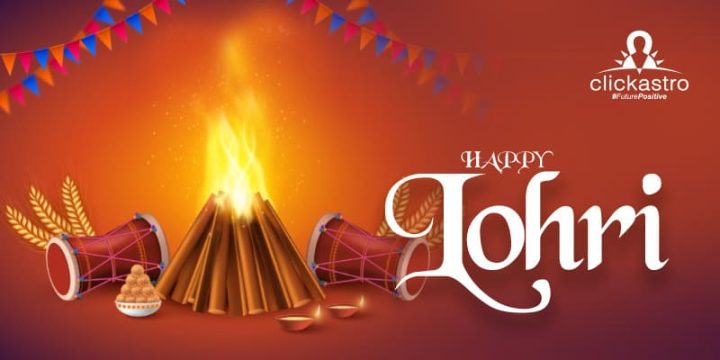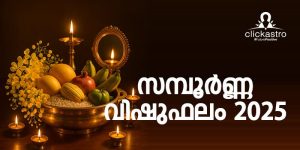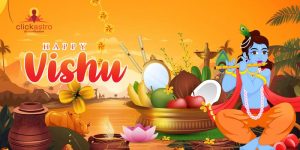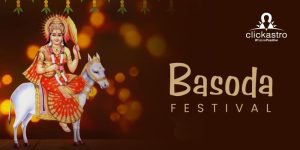Introduction
Lohri, a lively and culturally significant festival deeply rooted in Northern India, serves as a joyous transition from winter’s chill to the warmth of impending spring. Revered by both Hindu and Sikh communities, this celebration encapsulates the sun’s symbolic journey to the Northern Hemisphere, embodying a metaphorical shift from darkness to light.
The 2024 Lohri is celebrated on January 14, Sunday
As the year unfolds, Lohri beckons with its rich traditions and exuberant spirit. Originating from age-old customs, the festival resonates with the collective joy of communities, signifying the end of winter’s grasp and heralding the onset of brighter, warmer days. The vibrancy of Lohri is mirrored in the enthusiastic celebrations that include bonfires, traditional songs, and communal gatherings, all contributing to the festive tapestry that has woven its way into the cultural fabric of Northern India. Join in as we explore the historical roots, cultural significance, and unique festivities that make Lohri a cherished and eagerly awaited annual celebration.
The Changing Dates
The fluctuating dates of Lohri add an intriguing layer to the festival, highlighting its intimate connection with astrological and seasonal dynamics. Over 70 years, Lohri’s date has undergone a cyclic transformation, influenced by the evolving planetary configuration of the Sun. In the late 19th century, the festivities marked January 11th, gradually shifting to January 12th or 13th by the mid-20th century.
The year 2024 sees Lohri celebrated on January 14th, strategically positioned a day before
Makar Sankranti on January 15th. This temporal variability echoes the festival’s adaptability to astronomical rhythms, mirroring the ebb and flow of celestial patterns. As Lohri approaches each year, its ever-changing date not only underscores its astrological significance but also invites enthusiasts to marvel at the intricate dance between planetary alignments and the festive traditions that have endured through time.
Celebration Rituals
Lohri, a festival synonymous with warmth and prosperity, radiates exuberance in its celebrations. The diverse traditions and rituals woven into the festival’s fabric vary across regions, offering a rich tapestry of cultural practices. From the bonfires symbolizing the end of winter’s chill to the vibrant Chajja making and Hiran dance in Jammu, Lohri encapsulates a mosaic of customs. It stands as a testament to the cultural diversity that unites communities in a collective celebration of abundance and the promise of brighter days ahead.
Bonfire Tradition
The Bonfire Tradition lies at the very core of Lohri celebrations, serving as a poignant symbol that transcends the physical and ushers in a spiritual connection with nature. As the flames dance and crackle, they carry profound significance, symbolizing the triumphant end of winter’s icy grasp. In the tapestry of Punjab folklore, these high-reaching flames are more than mere embers; they become messengers conveying the heartfelt prayers of the people to the Lord Sun. These fervent pleas echo the collective desire for warm days ahead, heralding the onset of a bountiful harvest season.
The bonfire, with its roaring warmth, becomes a communal focal point, drawing families and communities together. Circling this blazing centerpiece, people partake in rituals that express gratitude for the passing winter and anticipation for the burgeoning spring. The dance of the flames becomes a visual poem, an ancient connection to celestial forces, and a symbol of hope, fostering a sense of unity among those gathered. The Bonfire Tradition, rooted in tradition and imbued with spiritual significance, marks Lohri as a festival that not only celebrates the seasonal transition but also embodies the timeless spirit of communal joy and shared aspirations for prosperity.
Chajja Making & Hiran Dance
In the enchanting landscapes of Jammu, Lohri transcends ordinary celebrations, embracing unique traditions like Chajja Making and the Hiran Dance, which add an extraordinary touch to the festive tapestry. Chajja, a vivid peacock replica, becomes a symbol of festivity and community spirit. Children, adorned in vibrant attire, carry this symbolic peacock from house to house, infusing Lohri with a distinct charm. The Chajja, with its ornate colors and intricate details, not only embellishes the festival but also signifies the spreading of joy and warmth.
The Hiran Dance, another mesmerizing facet of Jammu’s Lohri celebrations, unfolds as various communities come together to express gratitude and celebrate the beauty of nature. This graceful dance mirrors the harmony between humans and the natural world, emphasizing the interconnectedness of all living things. Through rhythmic movements and traditional gestures, participants convey a profound appreciation for the environment, making the Hiran Dance a heartfelt ode to the earth’s bounty.
Together, Chajja Making and the Hiran Dance in Jammu encapsulate the spirit of Lohri, offering a unique blend of artistic expression, cultural richness, and a deep connection to nature. These traditions not only elevate the festival to a grand spectacle but also weave an intricate narrative that resonates with the soul of Jammu’s vibrant cultural heritage.
Collecting Lohri
This delightful tradition amplifies the joyous spirit of the festival, as children become the bearers of festive cheer, weaving a thread of communal harmony. Engaged in lively Lohri celebrations, children play a pivotal role by visiting neighbors and friends, their voices harmonizing with traditional folk songs that resonate through the festive air. In exchange for their melodic offerings, these young participants receive more than just treats; they receive a cultural experience woven with flavors and aromas unique to Lohri.
The reciprocal gesture involves the gifting of a delectable assortment of seasonal delights. From the rich crunch of til and gachchak to the sweetness of sugar and jaggery, and the nutty goodness of moongphali (peanuts), the treat basket embraces both sweet and savory elements. Adding to this culinary array is phuliya or popcorn, enhancing the spectrum of flavors. Collectively, this amalgamation of treats becomes known as Lohri, a flavorful representation of shared festivities and the communal spirit that defines the festival.
As children traverse the neighborhood, exchanging music for these mouthwatering delights, Collecting Lohri becomes a symbol of unity, forging bonds of friendship and community. Through this heartwarming tradition, Lohri not only satiates appetites but also nourishes the sense of togetherness, making it a celebration that transcends mere culinary delights.
Regional Traditions
The essence of Lohri echoes through the agricultural states of India, where the festival intertwines with the very fabric of rural life. Rooted in an agricultural backdrop, Lohri becomes a heartfelt tribute to the Lord Sun and an expression of reverence for the bountiful elements of nature. As the festival approaches, communities unite in a collective celebration, emphasizing the interdependence between agrarian livelihoods and the changing seasons.
One distinctive tradition during Lohri is the offering of seasonal produce to the bonfire, turning the festival into a vibrant and communal affair. Sesame seeds, symbolizing prosperity and fertility, find their place alongside gur (jaggery), sugar candy, and gachchak—a sweet confection made from jaggery and various nuts. These offerings, carefully selected from the harvest, become tokens of gratitude, presented to the bonfire with prayers for abundant crops and a flourishing year ahead.
This ritual transforms the bonfire into a sacred space, where the crackling flames receive not only physical offerings but also the hopes and aspirations of the agricultural communities. Lohri, deeply ingrained in regional traditions, thus becomes a manifestation of the symbiotic relationship between the agrarian way of life and the cyclical patterns of nature, creating a vibrant tapestry that reflects the spirit of communal harmony and agricultural prosperity.
Historical Significance
Lohri’s historical significance traces its roots back to the Mughal era, marking its enduring presence across diverse regions like Delhi, Punjab, Haryana, Himachal Pradesh, and Jammu. The festival has weathered the sands of time, becoming an integral part of the cultural tapestry in these areas. While Lohri is acknowledged as an official holiday in Punjab, Jammu, and Himachal Pradesh, its celebration transcends official gazette status in Delhi and Haryana, yet it remains a cherished occasion enthusiastically observed by the communities.
The festival acts as a mutual bridge for Sikhs, fostering unity and cultural continuity between India and Pakistan. In both nations, Sikhs come together to celebrate Lohri, creating a shared moment that transcends borders and cultural differences. This mutual celebration serves as a poignant reminder of shared heritage, cultural ties, and the enduring spirit of unity despite geographical and political boundaries.
In the regions where Lohri holds official holiday status, the day becomes more than a festival; it transforms into a collective pause in daily life, allowing people to come together, celebrate their cultural heritage, and pay homage to the traditions that have withstood the test of time since the Mughal era. Lohri, therefore, not only reflects historical continuity but also acts as a cultural ambassador, fostering unity and shared festivities across diverse landscapes.
Conclusion
Approaching Lohri 2024, the anticipation for this vibrant festival is laden with the promise of joy, warmth, and cultural opulence. Lohri’s uniqueness unfolds through its ever-shifting dates, a celestial dance that mirrors the festival’s adaptability to astrological and seasonal transitions. The tapestry of diverse rituals, from the heartwarming Chajja Making and Hiran Dance in Jammu to the delightful Collecting Lohri by children, paints a picture of cultural richness that varies across regions. Embedded in historical significance since the Mughal era, Lohri serves as a cultural bridge for Sikhs in India and Pakistan, showcasing unity beyond borders.
As the bonfire crackles with ancient tales and communal spirit, Lohri invites everyone to partake in the festivities. Gather around, let traditional songs fill the air, relish in the exchange of sweet and savory treats, and embrace the essence of Lohri. Bid farewell to winter’s chill and revel in the promise of warmer days, united in the shared celebration of this truly unique and culturally profound festival.









